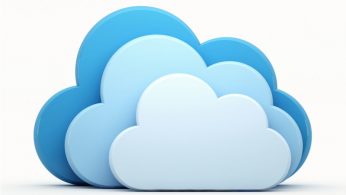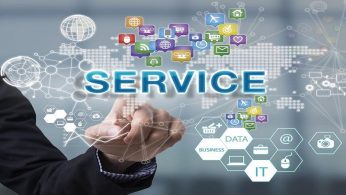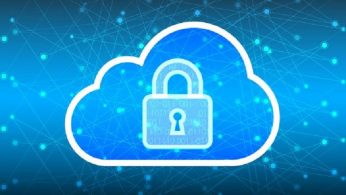For a long time, IT departments have had concerns about Software as a Service; the resistance can be traced to concerns about reliability and security, integration, customization, accessibility and job security. Find out how to best respond to the concerns
Service provider takeaway: SaaS-based products face an uphill battle in most IT departments. Service providers should take IT’s concerns about Software as a Service seriously and be prepared with answers that will smooth the path to SaaS sales.
In a recent story, I outlined how Software as a Service (SaaS) is changing the software sales process, giving more power to the business decision maker. But, of course, IT still has tremendous influence over software sales, and if you want to sell SaaS-based tools to IT departments, you’ll need to know how to best approach them.
As you know, IT departments have historically had concerns about Software as a Service (SaaS) systems, and that resistance has been a fundamental roadblock to SaaS sales. In order to sell SaaS-based systems to your customers, you’ll need to pay attention to their objections and be able to address them with solid advice. And, exposing your customers to a new generation of SaaS solutions specifically aimed at IT professionals could be what convinces them that SaaS is viable for their entire enterprise.
Resistance to SaaS
IT department resistance to SaaS has stemmed from a number of concerns, both valid ones and debatable ones. Among the valid reasons for IT departments to question SaaS is its reliability and security. They also are right to ask how a SaaS-based product will integrate with existing applications and databases or how it can be customized to meet a company’s needs. And they have a legitimate reason to be concerned about where their company’s data will reside and how they can ensure access to that data if their company decides to discontinue their SaaS subscription.
On the debatable side of the equation, many IT professionals simply refuse to consider SaaS products because they believe they cannot match the functionality of traditional, on-premise applications. Others are concerned that SaaS tools will alleviate the complexities of software deployment and day-to-day management to such an extent that they could threaten the IT staff’s job security.
Smart service providers will anticipate all of these potential concerns about SaaS and either proactively address them or be prepared to respond to them.
Addressing concerns about Software as a Service
If you take the proactive route, a good first step is to educate your customers’ IT staff about the potential IT and business benefits and real technical requirements of SaaS solutions. Carefully evaluate the functional capabilities of the SaaS offerings up for consideration to clearly understand how they compare with traditional on-premise applications. While some SaaS offerings may offer fewer opportunities to customize the applications, these shortcomings may be offset by quicker deployment capabilities and greater ease of use for multiple users, which brings greater productivity. Educating your customers on these tradeoffs is important.
To address concerns about job security, you should help the IT department identify how they can redirect the IT resources that will be freed up by Software as a Service from mundane daily tasks toward more strategic and valuable activities.
To address IT’s concerns about reliability and security, it’s important to ascertain that the SaaS vendor you recommend has provisions for SAS (Statement on Auditing Standards) 70 certification. This certification verifies that the SaaS vendor, or its hosting company, has implemented the right technology and business processes to ensure the reliability and security of its hosted applications.
It is also essential that you clearly understand where your customer’s data will be located, the security parameters that have been established to safeguard the data, and the policies that are in place to ensure that they have full accessibility to the data, especially if the SaaS vendor goes out of business or decides to discontinue service. In some cases, you might want to negotiate an escrow arrangement for your customers, in which access to the application code is guaranteed in the event that the vendor folds or discontinues a service.
In addition, it’s important that the SaaS vendor you align with designs its solution to permit users to reconfigure their format, workflow and data migration processes to accommodate their business requirements.
And to ensure interoperability with various legacy applications and data sources, make sure that the SaaS vendor you recommend not only architects its on-demand applications to include open application program interfaces (APIs) and Web services, but also leverages third-party integration tools and integration service providers.
Finally, you should work with your SaaS vendors to provide IT departments with detailed service-level agreements (SLAs) that clearly state their performance objectives, problem resolution policies and escalation procedures, as well as penalties for failure to meet these expectations.
Demonstrating the business case for SaaS
Once these concerns have been addressed, you can move on to building the business case for Software as a Service. You should develop total cost of ownership (TCO) and return on investment (ROI) assessment tools that can help the IT department fully understand and appreciate the cost savings and productivity improvements that can be generated from a SaaS-based product. These tools should be designed with the goal of helping your customer better understand the additional hardware, consulting and staff support costs that are associated with deploying traditional, on-premise applications. They should also be able to document and measure SaaS utilization levels.
A new generation of SaaS solutions aimed at helping IT departments better manage their day-to-day operations can serve as an effective proof-point for demonstrating the power of SaaS. These new SaaS solutions include Web-based security, storage, desktop and server management services from companies such as Symantec, EMC, Dell and Cisco Systems. These SaaS solutions are designed to meet the needs of IT departments seeking to automate their management requirements. IT departments that adopt these services will gain a first-hand understanding of the power of SaaS and why it appeals to business users. This first-hand experience will have a significant impact on their role in the overall selection and deployment process and could produce a fundamental shift in the corporate sourcing strategy.
By exposing the IT staff to Software as a Service, addressing their concerns about the delivery model and demonstrating the business benefits, you can serve as a trusted advisor who helps IT departments select, implement and fully leverage SaaS solutions that can enable them to better align their work with their business end users and support the strategic objectives of the organization.
Read More







